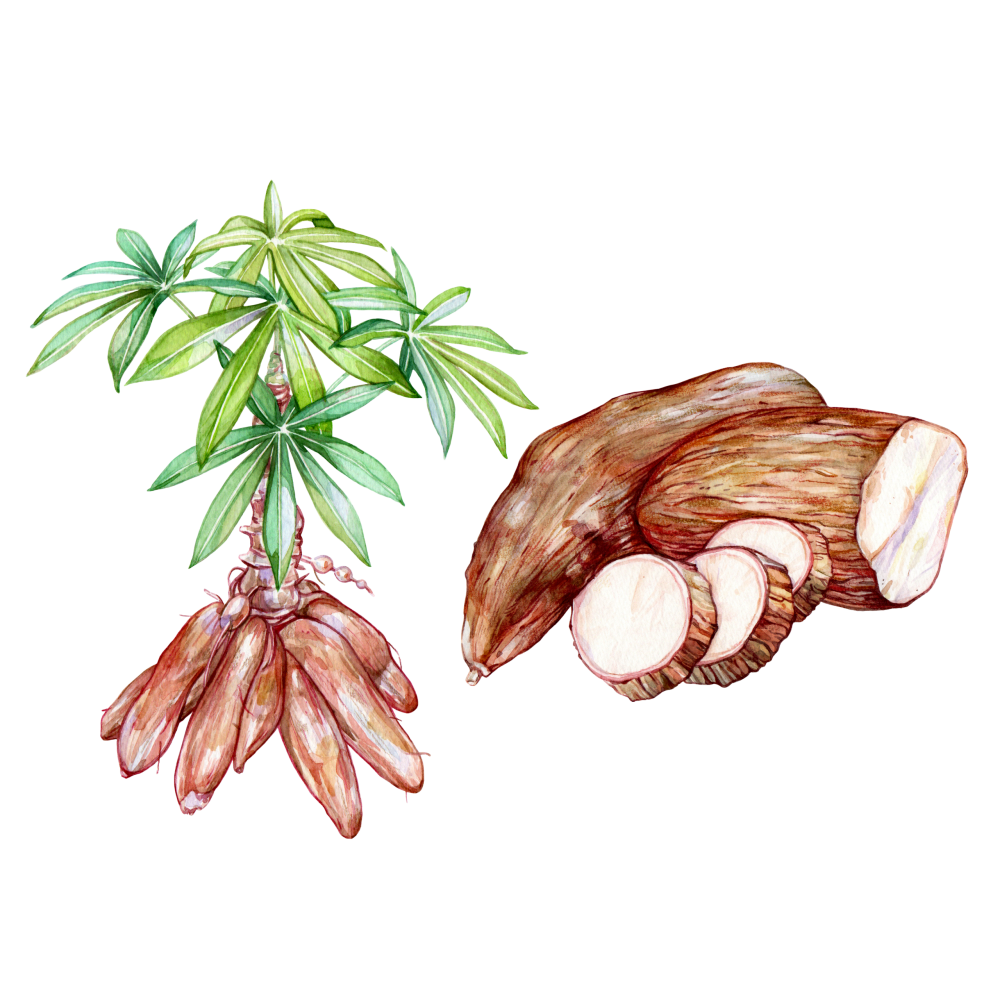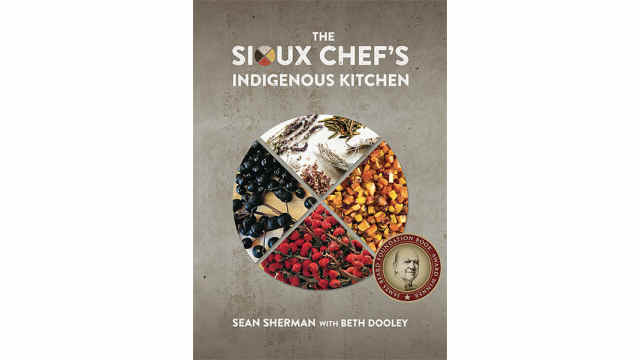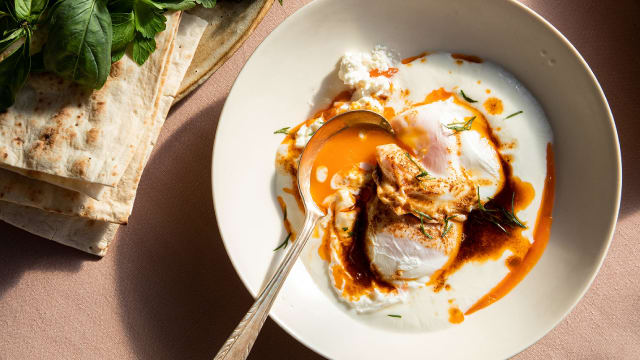Cassava

Latin name: Manihot esculenta
Other names: manioc, yuca, Brazilian arrowroot, singkong
Uses: Root vegetable, starch, alcohol
What is cassava?
Cassava is a thick, lumpy root with white flesh and scaly, papery brown skin. It looks like taro, cooks like potato, is gluten-free, and can be poisonous if consumed raw —cassava wears many hats, but never forgets its roots. This tuberous starchy all-star is a versatile and widespread source of carbohydrates, especially in tropical countries.
Why is cassava healthy?
If you are looking for an alternative to potatoes, cassava is a great way to diversify your starchy root vegetable options. Cassava flour has also gained popularity as a gluten-free option for baking. It’s a great source of complex carbohydrates, vitamin C, A, and various antioxidants. Cassava is also rich in fiber, which is associated with better blood sugar control, lower cholesterol levels, and enhanced immunity.
What does cassava taste like?
Cassava is available in two variants — sweet and bitter — with the former more popular. Nutty and somewhat sweet, it has a subtle earthy taste that is a friendly accompaniment for bolder flavors.
How do I use cassava?
Cassava’s roots, peels, and leaves are toxic, so it should never be eaten raw. Before cooking, make sure to soak it in water for a while, and then peel it with a knife. This adaptable staple can be boiled, baked, grilled, steamed, fried, and mashed. It is also frequently made into chips. Use it for empanada and tamale dough; it can act as a gluten-free flour in baked goods as well.
In West Africa, fufu — a soft white dough used to accompany other dishes — is made from fermented or boiled, pounded cassava. Try cassava mashed, sprinkled with salt and pepper, and served as a side dish that will soak up all manner of stews.
Popular cassava dishes from Latin American and Caribbean cuisines include casaba, a cassava flatbread; yuca con mojo (cassava in garlic sauce); and cativias, a savory turnover. In Jamaica, bam-bam is the collective term used for food made from cassava such as bread, pancakes, and muffins. Cassava starch is used to make tapioca pearls or powder, which are used across Southeast Asia in desserts and to thicken puddings.
What does cassava pair well with?
Because it’s fairly bland, it’s best paired with more assertive flavors like curries or stews. If you’re interested in using it in baking or desserts, coconut, mango, and other tropical flavors are a good bet.
Where does cassava grow?
A drought-tolerant crop, cassava can grow even in depleted soil and unfavorable conditions, making it a prized vegetable in equatorial countries around the world. Cassava has been cultivated for at least 1,400 years, with hints of domestication in the Amazon as far back as 10,000 years. The tuber travelled with Portuguese traders from Brazil to their colonies around the world. Nigeria is the world’s largest producer today.
How to buy cassava:
Look for firm roots with no mushy spots.
Surprising cassava fact:
The cyanide naturally present in raw cassava — particularly the bitter varieties — was used to poison arrows by some indigenous peoples in Central and South America.




